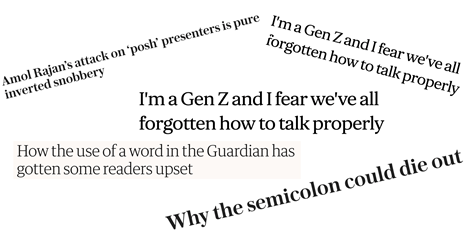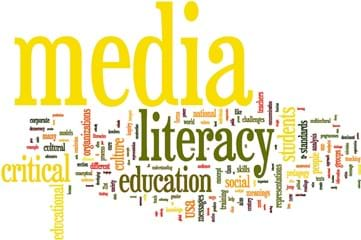Two years ago EMC hosted Julia Sutherland from Sussex University at one of our free twilight sessions. She presented research she’d carried out with colleagues, provisionally titled ‘A Faster Immersive Read’. The research looked at what happened when classes read two novels back-to-back at a relatively quick pace. This was in contrast to the more conventional approach to teaching a novel in class, in which pupils spend a relatively long time on one book, with lots of stopping and starting along the way.
The results from the research were encouraging. While small in scale, and so by no means conclusive, pupils in the classes taking part showed above average improvements in reading age; this was slightly more pronounced for pupils operating at relatively low levels of attainment.
Several teachers left the twilight fired up and decided to replicate the approach in their own schools. We’ve been drawing attention to it on courses ever since. The feedback in just about all cases has been positive. Even where improvements in reading age are difficult to judge absolutely, the approach still seems to increase engagement, motivation and enthusiasm – in pupils and teachers alike. Pupils enjoy the experience of reading for sustained periods of time, and they value the opportunity to read two books, so providing them with concrete points of comparison, allowing connections and differences to be discussed and developed.
An article based on the research appeared in the UKLA Literacy journal in May under the title ‘Just reading’: the impact of a faster pace of reading narratives on the comprehension of poorer adolescent readers in English classrooms. [It was freely available but is now behind a paywall.] Subsequently it was widely circulated via social media, with English teachers almost universally warming to the idea that they can streamline their practice and get on with the business of ‘just reading’ good books with their classes.
The research is terrific and, at EMC, we agree with the headline sentiment that pupils will benefit from getting through novels at a relatively quick pace. We’d urge teachers to try and get access to the published article and read it in full to get a sense of what exactly the project involved and how it was interpreted in different schools, though. Many online comments seem to slightly misread the research, or not to have actually read it in full.
This blog isn’t intended as a summary or defence of the article. Instead, it intends to explore two points that discussions on social media have focused on heavily: first, the idea that all you need to do to teach a novel is read it; second, the notion of challenge in a novel (the article’s abstract refers to pupils involved reading “challenging, complex novels”). Here, I want to question whether teaching a novel really is about ‘just reading’; and I also want to interrogate exactly what ‘challenge’ in a KS3 novel looks like.
Why do we teach novels and is it ever about ‘just reading’?
The term ‘just reading’ in the research article’s title is very firmly placed in inverted commas. None of the participant classes ‘just’ read, or just had a book read to them. Pupils all had access to the text themselves, with teachers pausing at apposite moments to reinforce meaning and to focus especially on inference. Where teachers worked through the books particularly efficiently, they had time afterwards to engage in a series of reflective activities around them. This, it seems to me, is crucial. The research measured improvements in reading levels. But we need to recognise that teaching novels is about much more than simple comprehension. Comprehension is just the start. The study of a novel offers an induction for KS3 pupils into both the joys of reading and into serious literary study. We don’t teach novels to improve levels of vocabulary or to develop understanding of different sentence structures (useful side benefits though these may be). We teach them to show young people what reading and studying novels is all about. Thus, they need time to explore their own personal responses, and to see how these compare with other responses; they need opportunities to discuss the major ideas and themes in novels, and how these fit in with what they have read or watched before; they need to interrogate how novels are put together, investigating important aspects of narrative, structure, form, characterisation, and so on. It’s complicated stuff: a step beyond comprehension, in many ways more difficult and certainly harder to measure, but also potentially much more energising and purposeful.
So does the concept of ‘just reading’ miss the point and oversimplify what needs to go on in English classrooms? Absolutely not. It is the part of the teaching process that lays the ground work for serious literary study. If it happens relatively quickly, it leaves time for serious exploration. And if it results in better comprehension than a more fragmented approach to reading, then it can only result in more fruitful subsequent literary study.
The enthusiasm for the ‘just reading’ approach, along with its promising results, highlights the fact that reading is an experiential, unfolding process. Meaning reveals itself gradually over an extended period of time, requiring readers to constantly think back, puzzle, make predictions, make connections, ask questions, and even change their minds. It makes sense that when this is done relatively quickly in the first instance, so that pupils can keep the whole text in mind, then overall understanding improves. Halting the reading experience too much, so that it bears little resemblance to the reading process that most of us engage in when reading a novel for pleasure, leads to the disruption of understanding itself. Such disruptions we would argue at EMC include too much time using novels to teach tangential aspects of the subject, such as vocabulary, too much detailed focus on word and sentence level analysis at an early stage, or too much attention given to social and historical context (both before and during reading). Let the novel be read as a novel, with pupils filling in gaps for themselves as the reading evolves, and assistance only being offered where it is absolutely necessary to ensure understanding. Let the pauses in the reading be about the students’ immediate responses, thoughts and ideas, allowing them to share their insights and observations, as well as their pleasure in the text. Let them focus on the important aspects of literary study, and on interrogating meaning.
What does a challenging novel look like at KS3?
Lots of comments about the ‘just reading’ research expressed general support for the idea, but felt compelled to qualify this by insisting on the importance of ‘challenging’ texts. The research itself stressed the importance of complex, challenging texts. But I wonder if the researchers and commentators share the same concept of what a challenging novel at KS3 looks like.
Recently there has been trend at KS3 to teach novels identified by teachers as ‘difficult’. Often this involves teaching a Victorian novel. Alongside this has developed a sense among some commentators that children’s and YA fiction has no place in the classroom – that it is not challenging enough.
All of the texts mentioned in the research are written specifically for young people though. They include novels often rubbished by those shouting loudest for increased challenge, such as The Boy in the Striped Pyjamas. So are the researchers overstating the merits of the novels used in the research (schools were free to select the two novels themselves, and often did so based on what was available), or do some commentators need to think a little more carefully about what challenge in reading involves?
It seems to me that we need to differentiate between challenge and difficulty when thinking about how best to teach young readers, and that the two have recently become conflated. The national curriculum makes plenty of room for teaching ‘difficult’ texts at KS3. And so it should. Such texts are part of our shared cultural heritage, and pupils can gain a real sense of achievement in getting to grips with them. Shakespeare is a perfect example of such desirable difficulty. Teachers have become adept at bringing his plays to life with this age group for several decades now – and pupils have responded with enthusiasm. There is even room for dipping a toe into the rich waters of the Victorian novel. But too many ‘difficult’ texts like these and the approach advocated by ‘just reading’ becomes impossible. The reason is simple: the texts are linguistically too far removed from what young readers can reasonably manage without considerable teacher intervention. This disrupts the flow of reading, turning the experience of the text into something other than reading. It is perfectly possible to teach such texts, but for most children at KS3 they resist a fluent, fast-paced, unfolding read; in other words, they can actively work against developing the cognitive recursive skills required to be a strong reader – the thinking back, puzzling, making predictions, making connections, asking questions, changing minds, and so on. Consequently, they limit opportunities not only to develop comprehension, but also serious textual engagement.
So how might we reasonably think of challenge at KS3? I would argue that primarily it involves introducing pupils to novels that show them new possibilities for what literature can do. Forget vocabulary and syntax for a moment, and think about bigger things: narrative structure, use of voice, reader engagement and manipulation, experimentation with form, ambiguity, plot resolution, and so on. And now let’s think again about vocabulary and syntax. Let’s be bold, and say that sometimes texts can be challenging when these are relatively straightforward (Cormac McCarthy’s The Road, anyone?).
There are many excellent examples of novels that are challenging for KS3 pupils, without being too difficult. One is In the Sea there are Crocodiles, by Fabio Geda, as used by Year 9 pupils in EMC’s ‘It’s Good to Talk’ project. The novel’s language and syntax isn’t particularly difficult, but conceptually it’s challenging, particularly in its use of a split narrative, and the fictionalisation of a real-life story. This combination of accessibility and challenge meant that the approach used in this school with a single novel was very similar to that used with two for ‘Just Read’. Pupils could get through the novel relatively quickly, developing their own ideas and conceptual understanding along the way, and embarking on some substantial work at the end. Teachers looking at this work have often commented on the high quality of the work that emerged.
The Boy in the Striped Pyjamas is another good example of a novel that combines accessibility and challenge. Its language is relatively straightforward, in large part a narrative necessity, given that it presents the third person limited point of view of a nine-year-old boy. But this leaves readers free to engage with the other multiple challenges that the novel throws up: working out exactly what is going on; engaging with the third person limited point of view; questioning why Bruno is so ignorant; asking whether Bruno’s ignorance is representative of a bigger kind of ignorance; piecing together a narrative that moves backwards and forwards in time; making connections between different characters; linking different narrative threads to real historical events; reflecting on whether or not a novel should be able to play with appalling historical events in this way; thinking about why author John Boyne called it ‘a fable’; questioning the representations of Bruno and Shmuel; reflecting on the emotional impact of the novel; wondering why the novel has been so successful; considering the authenticity of the narrative voice; exploring the experience of reading a children’s novel with such a terrible ending, and so on.
There are lots of valid reasons as to why teachers might not want to teach The Boy in the Striped Pyjamas. I would argue, though, that lack of challenge should not be one of them – certainly not if it is limited to a Year 7 audience, and if it is in the context of a broader curriculum that contains other challenges that might more closely be aligned to ‘difficulty’. It seems to me to be perfectly pitched to allow pupils to ‘just read’ in a way that allows them to develop their comprehension and simultaneously to build their understanding of exactly how literature works. All the better if it is then paired with another text that might well offer different forms of challenge, as well as opportunities for comparison.
Westbrook, J., Sutherland, J., Oakhill, J. and Sullivan, S., 2019. ‘Just reading’: the impact of a faster pace of reading narratives on the comprehension of poorer adolescent readers in English classrooms. Literacy, 53(2), pp.60-68.




